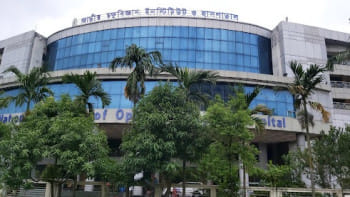Why we need a maritime policy
Bangladesh established the Marine Fisheries Academy in 1972. It is the only academy of its kind in all of South Asia. Now after 45 years of its establishment, what exactly has it achieved in the fishing industry and how much have we been able to use the graduates of the academy to take advantage of the bounties of the Bay of Bengal and the Indian Ocean?
Some of the relevant questions in this regard are:
1. Do we have a robust fishing fleet?
2. With a huge maritime boundary which is now internationally recognised, do we have enough security and large fishing vessels to employ all these graduates out of the Marine Fisheries Academy?
3. Who is harvesting the fishing bounties in the Bay of Bengal these days?
4. What are these graduates doing to apply their academic knowledge and practical training?
You may try to find these answers by surfing the net. Unfortunately, you won't find much information, because our fishing activity in the seas and oceans is miniscule.
The Bangladesh Marine Academy (BMA), formerly known as the Juldia Marine Academy, which changed its name few times thereafter, was established in 1962 on a sprawling 200 acre campus in Juldia, Chittagong.
Since inception, the BMA has produced over 3,000 professionals who excelled in sea careers worldwide, and remitted a lot of foreign currency home. The Marine Fisheries Academy produced 1,300 graduates and many ended up competing for the same jobs coveted by the BMA cadets. Only a few took up jobs in the fishing vessels plying the Bay of Bengal.
These two academies were established for two different purposes. The Fisheries Academy is operated by the Fisheries Ministry for the sole purpose of educating cadets to serve the expanding fishing fleets, whereas the BMA is under the Shipping Ministry and has the sole purpose of gearing cadets toward a career in serving ocean going vessels.
With 200 nautical miles of exclusive economic zone, 18,813 sq. kms of waters comprising of territorial sea, and undeniable sovereign rights in the seabed extending as far as 354NM from the Chittagong coast in the bay, Bangladesh is assured of explorations for minerals, oil and gas, along with vast marine fisheries. It is time for us to build larger fishing vessels, including the ones with processing and packing facilities. The fisheries graduates must be employed efficiently to extract these resources and care should be taken to not divert them to sailing on foreign ships.
Like many misdirected activities, the Fisheries Academy now trains cadets to serve ocean going merchant vessels as it is more lucrative than serving fishing vessels, thus nullifying the academy's original purpose. Additionally, the PM decreed the opening of four more marine academies (in Barisal, Pabna, Rangpur and Sylhet) and a maritime university under the supervision of the Navy.
One wonders if there was a public discussion to analyse such massive expansion of training facilities while the job market in ocean going vessels have depleted ten-folds in the last few years. When the taxpayers' money is used to plan and build something, logically speaking, the public should be consulted for such an expense.
BMA cadets are struggling to seek employment in foreign flagged vessels as the Bangladeshi shipping industry (for the purpose of sea employment) is almost non-existent. In the last couple of decades, the shipping industry has been destroyed by the maritime policies, which are counter-productive to development. We are no longer a maritime nation of any significance.
Against the backdrop of this depressing scenario, our sailors have become pariahs in the eyes of foreign ship owners for many reasons. Several countries have stringent visa requirements, which disallow Bangladeshi seamen to board or disembark vessels in their soil. All these factors combined have resulted in a bleak period for graduates of the Marine Academy.
In this recessionary employment scenario, we have added 20 private academies that sprouted in the backyards of fish markets or shopping malls, producing another 500 to 1000 cadets per year. Many of these private academies extract high tuition fees from students (as much as Tk. 20 lakh for two years of training), while providing substandard education. There is practically no supervision regarding the standard of their teaching or operations. Most of these permits were issued in the last five years.
So one wonders, do we have a maritime policy or are we proceeding in the uncharted ocean? What is the future of the historical Bangladesh Marine Academy?
The writer is the publisher of the South Asia Journal and author of Bangladesh Maritime History.

 For all latest news, follow The Daily Star's Google News channel.
For all latest news, follow The Daily Star's Google News channel. 






Comments